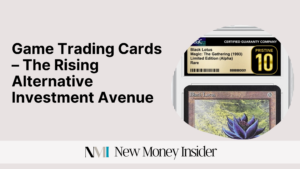Strategy of Diversified Investing
Investing can often feel like navigating a tightrope, where balancing risk and reward becomes crucial. On one side, you have the potential for higher returns, and on the other, the possibility of significant losses. This balance is at the heart of smart investing.
Diversified investing plays a pivotal role in this balancing act. It involves spreading your investments across various asset classes, sectors, and geographical locations to reduce the risk of significant losses. Essentially, it's the investment equivalent of not putting all your eggs in one basket.
By diversifying, investors can aim for a balanced portfolio that captures potential gains while mitigating the impact of market volatility.
For a deeper understanding of the concept, Investopedia's guide on diversified investing offers a comprehensive look at how it works and its benefits.
Understanding Risk and Reward in Investing

At the core of investing is the relationship between risk and reward. Generally, investments with higher potential rewards come with higher risks. Conversely, lower-risk investments typically offer more modest returns.
Understanding this relationship is key to making informed investment decisions that align with your financial goals and risk tolerance.
High-risk investments often include stocks, particularly those in volatile sectors or from emerging markets. These investments can offer substantial returns, but they also come with the risk of substantial losses, especially in the short term.
For instance, investing in a tech startup could lead to significant gains if the company succeeds, but there's also a high risk of losing the entire investment if the company fails.
On the other end of the spectrum are low-risk investments, like government bonds or high-grade corporate bonds. These are generally considered safer as they offer fixed returns over a period.
However, the trade-off is that these returns are typically lower than what you might achieve with higher-risk investments.
Your risk tolerance – how much risk you're willing and able to take on – significantly influences your investment choices. This often depends on factors like your financial goals, investment timeframe, and personal comfort with uncertainty.
A young investor saving for retirement may be more comfortable with higher risks for potentially higher returns. In contrast, someone nearing retirement may prefer lower-risk, stable investments.
To better understand risk tolerance, Morningstar's article on investment risk provides a clear and straightforward explanation, helping you assess your own risk preferences.
The Essentials of Diversified Investing

Diversification in investing is akin to spreading your bets across various possibilities, rather than wagering everything on a single outcome. It's a strategy designed to reduce the risk of significant losses by allocating investments across different financial instruments, industries, and other categories.
This approach can help provide a safety net during market downturns, as not all asset classes react the same way to economic changes.
When we talk about asset classes, we're referring to groups of investments that exhibit similar characteristics and behave similarly in the marketplace. The most common asset classes include:
- Stocks (Equities): Shares in companies that offer growth potential but can be volatile.
- Bonds (Fixed-Income Securities): Loans to governments or corporations, usually offering lower risk and steady income.
- Real Estate: Investment properties or real estate investment trusts (REITs) that can provide income and potential appreciation.
- Cash and Cash Equivalents: Savings accounts, certificates of deposit (CDs), and money market funds, offering low risk and liquidity.
Each of these asset classes carries different levels of risk and return, making them behave differently under various market conditions. For a beginner's guide on different asset classes, this article from Forbes is a helpful resource.
Geographic diversification is another aspect to consider. This involves spreading investments across different countries and regions. While domestic investments might be more familiar and seem less risky, international investments can offer growth opportunities and a hedge against domestic market downturns.
For insights into the importance of geographic diversification, check out this piece by Charles Schwab.
Building a Diversified Portfolio

Creating a diversified investment portfolio involves several key steps:
- Assess Your Financial Goals and Risk Tolerance: Determine what you're investing for – retirement, a home, education – and how much risk you can comfortably take on. Tools like Vanguard's investor questionnaire can help identify your risk profile.
- Choose the Right Mix of Asset Classes: Based on your risk tolerance and investment timeline, decide on an asset allocation that suits your needs. Younger investors might lean more towards stocks for growth, while older investors might prefer bonds for stability.
- Select Individual Investments: Within each asset class, pick specific investments. This can include individual stocks, bonds, mutual funds, ETFs, etc.
- Regularly Review and Rebalance Your Portfolio: Over time, your investments will grow at different rates, which can shift your asset allocation away from your target. Regularly reviewing and rebalancing your portfolio helps maintain your desired risk level.
A step-by-step guide on building a diversified portfolio can be found in this article by Fidelity.
Remember, the key to successful diversified investing is not just about creating a varied portfolio but also maintaining and adjusting it in line with your changing needs and market conditions. Regular reviews ensure your investments stay aligned with your goals, and rebalancing helps keep your risk level in check.
Diversification Strategies for Different Investor Profiles

Every investor has a unique profile based on their goals, age, risk tolerance, and investment timeline. Here’s how diversified investing strategies can vary across different investor profiles:
- Conservative Investors: These investors usually prefer stability and are risk-averse. For them, a diversified portfolio might lean heavily towards fixed-income securities like government bonds, high-grade corporate bonds, and money market funds. These investments offer lower returns but are less volatile. Conservative investors may also include some high-dividend, low-volatility stocks to slightly enhance returns. A useful resource for conservative investing strategies is this guide by The Balance.
- Moderate Investors: This group seeks a balance between risk and return. Their portfolios often include a mix of stocks and bonds in a balanced proportion. Stocks offer growth potential, while bonds provide income and stability. Mutual funds and index funds are popular choices for moderate investors, as they provide built-in diversification. For a deeper understanding, Morningstar’s article on creating a balanced portfolio is highly informative.
- Aggressive Investors: These investors are willing to accept higher risk for the possibility of higher returns. Their portfolios are typically heavily weighted towards stocks, especially in sectors like technology, biotech, or emerging markets, which have higher growth potential but also more volatility. Aggressive investors might also explore options and leveraged ETFs. However, it's crucial to understand these instruments well. For aggressive investment strategies, Investopedia’s guide is a valuable resource.
Common Mistakes in Diversified Investing

Diversification, while essential, can be misapplied. Here are some common pitfalls:
- Over-Diversification: Holding too many investments can be counterproductive, leading to average returns and making portfolio management cumbersome. It’s important to find a balance where diversification benefits are maximized without diluting potential returns.
- Under-Diversification: This happens when an investor’s portfolio is too concentrated in one asset class or sector, increasing the risk of significant losses if that area underperforms.
- Emotional Investing and Market Timing: Trying to time the market or making investment decisions based on emotions can undermine diversification efforts. It's important to stick to your investment plan and avoid reactive decisions based on short-term market fluctuations. For more on avoiding these mistakes, CNBC’s article on investment pitfalls offers practical advice.
The Role of Emerging Technologies and Trends in Diversification

Emerging technologies and trends are reshaping investment strategies:
- Fintech and Robo-Advisors: Financial technology has made investing more accessible and cost-effective. Robo-advisors use algorithms to create and manage diversified portfolios based on an investor’s risk profile. This technology has democratized sophisticated investment strategies, making them accessible to the average investor. For an overview of robo-advisors, this article from NerdWallet explains how they work.
- Emerging Market Trends: Keeping an eye on emerging market trends is crucial for a diversified portfolio. This can include sectors like renewable energy, electric vehicles, or healthcare innovations.
- Cryptocurrency and Alternative Investments: The rise of cryptocurrencies and other alternative investments (like commodities, hedge funds, private equity) has provided new diversification options. While these can offer high returns, they also come with significant risks and should be approached cautiously. CoinDesk’s beginner guide to cryptocurrency investing can provide foundational knowledge in this area.
Wrapping Up: Key Takeaways in Diversified Investing
In the journey of investing, balancing risk and reward is akin to navigating a complex yet rewarding landscape. Diversified investing stands out as a fundamental strategy in this process, offering a pathway to potentially optimize returns while mitigating risks.
We've explored the essence of diversified investing, tailoring strategies to different investor profiles, and the significance of avoiding common pitfalls in portfolio management.
For conservative investors, the focus remains on stability through low-risk investments. Moderate investors strike a balance between risk and stability, while aggressive investors pursue higher returns at the cost of higher risk. Each approach underscores the importance of aligning investment choices with personal goals and risk tolerance.
However, diversified investing is not without its challenges. Over-diversification can dilute potential gains, while under-diversification increases risk exposure. Emotional investing and attempts to time the market can disrupt even the most well-planned investment strategies.
Moreover, the dynamic nature of financial markets, fueled by emerging technologies like robo-advisors and trends in areas like cryptocurrency, demands constant learning and adaptation.
As we conclude, remember that the path to successful investing is an ongoing journey of education and adaptation. Continually educating oneself about market trends, investment strategies, and personal financial goals is crucial. Equally important is the willingness to seek professional advice when necessary, ensuring your investment decisions are well-informed and aligned with your long-term objectives.
Additional Resources
For those eager to deepen their understanding of diversified investing and stay updated with the latest tools and trends, here are some valuable resources:
- Further Reading: To expand your knowledge on diversified investing, consider exploring The Bogleheads' Guide to Investing, a comprehensive resource for investors at all levels.
- Investment Tools and Apps: Platforms like Mint and Personal Capital offer robust tools for portfolio management and financial tracking, helping you keep a close eye on your investments.
- Professional Advice: For personalized investment advice, consider reaching out to certified financial advisors. Websites like Certified Financial Planner Board can help you find qualified professionals in your area.
In summary, diversified investing is not a set-it-and-forget-it strategy but a dynamic process that evolves with market conditions and personal circumstances. Stay informed, be adaptable, and don’t hesitate to seek expert guidance to navigate the complex yet rewarding world of investing.



